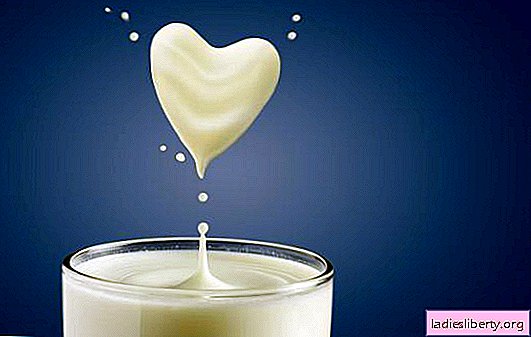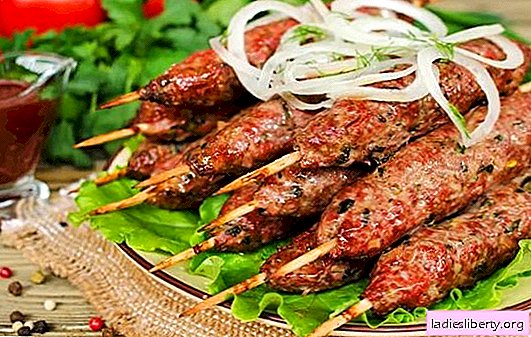
Historians call it one of the oldest products, the benefits and harms of milk are the subject of controversy among scientists and nutritionists. Today, people consume dairy products more than ever. There are fashionable alternatives to milk and at the same time, it is unique. In a word, to know more about milk is interesting, important and appetizing.
Deer, female zebu, camel, female zebra, buffalo, mare, donkey, female yak, sheep, goat and cow. The milk of the last two animals leads the world market, although, in terms of taste and nutritional value, it does not lose to it, but simply - it is peculiarly different (and in many ways similar) to the milk of the other animals.
In-store milk is subjected to specific processing in order to increase the shelf life and destruction of pathogenic microorganisms possibly contained in it.
There are sterilization, pasteurization and ultra-pasteurization - all this implies the heating of milk at certain high temperatures and times.
The latter technology is the most expensive, but the most sparing in terms of preserving useful substances in milk, and also a good opportunity to keep it at (in unopened packaging) room temperature for more than a month.
The energy value of skim milk (0.1%) is 31 kcal. At 6% fat content - about 83 kcal. And nutritionists insist that milk with a fat content of 2.5% is most useful - the most important vitamins and minerals will already be absorbed from it.
Nutritionists recommend drinking at least 112 liters of whole milk per year, not exceeding 2 liters per day. Any hour of the day or night is good for this drink, but there are two special periods and the milk consumed:
- in the morning, on an empty stomach - improves digestion, prevents heartburn;
- in the evening, at night - attracts a good good sleep.
Whole milk goes well with any products from it, rye bread, eggs (in omelettes and ogol-mogul), banana (protein shake for muscle growth), potatoes, blueberries and papaya.
But there will be harm, and not the benefit of milk, when combined with fish, fresh yeast baked goods, cucumbers, grapes, tomatoes, coffee (neutralizes caffeine), grapes.
In the composition of milk it is worth noting:
- Protein - he is far from a full-fledged meat, but these are essential amino acids, that is, the "building material" for updating the entire body.
- Vitamin D - are also synthesized in the skin under the influence of the sun, it is necessary for a beautiful tan and growth of children in accordance with age. Goat's milk is rich in it - 8.8% of the daily requirement per 100 ml. Vitamins E and group B are also present in all milk.
- Calcium - It is well known that it is needed for the skeletal system, but it is also valuable for blood coagulation and muscle contraction. In 100 ml of cow it is contained at 9% of the daily norm. There are other minerals in milk, but in smaller quantities - copper, magnesium, phosphorus, iodine, chlorine, iron, sulfur.
The less aggressive the processing (heating) of the milk, the more useful microorganisms are preserved that contribute to the improvement of metabolism, normalize the intestinal microflora, and strengthen the immune system.
Regular consumption of milk affects the following:
- complexion improves, hair becomes more shiny, and nails become stronger;
- the breakdown of body fat is accelerated;
- blood pressure normalizes;
- working capacity increases;
- the cold passes faster without complications;
- the general protection of the body from an unfavorable ecological environment increases;
- toxins, toxins are removed, blood sugar level decreases.
Milk allergy is one of the most common in the world. Severity ranges from skin rashes to anaphylactic shock. The reaction is caused by milk proteins - casein or whey (albumin and globulin). It is believed that in children, an allergy to milk can disappear by 4-5 years, but with adults, not everything is so good - usually, it’s forever.
It is impossible to consume not only whole milk, but all products from it.
And the replacement of products, say, from a cow to another animal species, according to the latest scientific data, is practically meaningless. In the best case, an allergy will go into a “quiet” form and, without showing violently, will destroy the body gradually.
But do not confuse allergies with lactase deficiency, in which the body simply does not have enough enzyme to break down lactose milk sugar.
In this case, really - you can try different products (cheese, yogurt, butter, milk) and from different animals - it is possible that something will be absorbed more easily. Plus, there are drugs that promote the absorption of lactose and special therapeutic diets.
As for the information that the human body is harmed by milk, not good, because it is not capable of assimilating milk in principle, even if everything seems to be fine, then this theory has approximately equal supporters and opponents in the world. But it’s also wise to focus on the choice of many, those who are distinguished by excellent health (for example, athletes), but at the same time, milk loves and consumes.
Fresh milk is an exquisite delicacy, but not for nursing mothers - for several hours, while estrogen hormones are destroyed in it, it can degrade the quality of the milk that appears in the woman herself.
Farm milk is usually boiled for disinfection. But with one hundred percent confidence that the cow is healthy, milking and storing milk occur in impeccable cleanliness - this is not necessary.
August 22 in the world celebrate the Day of vegetable milk. Its origin is diverse:
- soybean;
- cereal - from oats, rice, wheat seedlings;
- walnut - from almonds, cashews, hazelnuts, peanuts, pine nuts and coconut nuts (the latter does not occur under human hands, but by itself).
In the kitchen, these liquids are almost a complete substitute for animal milk - for cereals, desserts, pancakes and other pastries, sauces, added to coffee.
The reason for choosing may be intolerance to ordinary milk or a certain disease, vegetarianism, the customs of healthy lifestyle, or simply taste preferences.
Nut milk is a source of healthy fats, such as omega-3s, antioxidants for cancer and premature aging. Grain is the vitamin of "beauty" E.
Soy - phytoestrogens for reproductive health.
But biologists warn - one is not a full-fledged alternative to the other, especially when it comes to baby food. Therefore, ideally, it is better to maintain a balance - to have animal and vegetable milk on the table, in all its diversity of taste and benefit.











